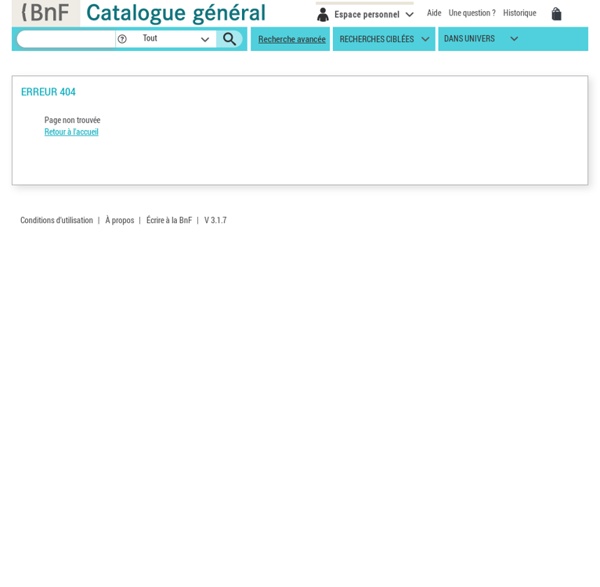



BRNE - Banque de ressources numériques pour l'Ecole Les Banques de Ressources : Pour quoi faire ? Les BRNE sont mises à disposition des utilisateurs après inscription et fonctionnent sur tout support. Les contenus sont en grande partie téléchargeables et adaptables pour une meilleure différenciation et répondre aux besoins de tous les élèves. Des atouts à explorer : différenciation, innovation, interactivité, attrait, entraînement, suivi et évaluation, remédiation, travaux personnels individuels et collectifs, essai-erreur, productions intermédiaires, traces « écrites augmentées » des apprentissages, recherche, accessibilité et adaptabilité des ressources, pour toutes les modalités de travail et pour différents temps d'apprentissages ... Quatre nouvelles BRNE sont prévues en 2019-2020 en français langue seconde (FLS), italien et autres langues vivantes, Langues et Cultures de l'Antiquité (LCA) sur les niveaux école collège et lycée, ou encore français et mathématiques en cycle 2. CM1, CM2 et 6e 5e, 4e et 3e Infographie
Site internet du Centre national du Livre Bloom's Taxonomy Looking for Strategies and Activities? Click Here! What is Bloom’s Taxonomy? Western education systems often describe the outcomes they expect from students as knowledge, skills and attitudes – KSAs. Knowledge refers to mental skills or the cognitive domain of learning. Skills refers to the psychomotor or manual skills that need to be developed by school aged members of society. The most important domains to consider in regards to second language education are the cognitive and affective. What do the Cognitive and Affective Taxonomies involve? BLOOM’s COGNITIVE TAXONOMY Bloom's cognitive taxonomy is organized into six sub-domains, each more cognitively demanding than the next. back to top BLOOM’s AFFECTIVE TAXONOMY This domain focuses on the manner in which we deal with things emotionally, such as feelings, values, appreciation, enthusiasms, motivations, and attitudes. Receiving phenomena Responding to phenomena Valuing Organization Internalizing values
Catalogue SUDOC California Avocado Toast 3 Ways Nutrition information per serving California Avocado Toast with Fried Egg Calories 260; Total Fat 17 g (Sat 3 g, Trans 0 g, Poly 2.3 g, Mono 9 g); Cholesterol 185 mg; Sodium 490 mg; Potassium 450 mg; Total Carbohydrates 19 g; Dietary Fiber 6 g; Total Sugars 3 g; Protein 10 g; Vitamin A 381 (IU); Vitamin C 7.7 mg; Calcium 214 mg; Iron 2.3 mg; Vitamin D 41 (IU); Folate 115 mcg; Omega 3 Fatty Acid 0.1 g % Daily Value*: Vitamin A 8%; Vitamin C 15%; Calcium 20%; Iron 10% California Avocado Toast with Heirloom Tomatoes Calories 200; Total Fat 13 g (Sat 1.5g, Trans 0 g, Poly 1.5 g, Mono 7 g); Cholesterol 0 mg; Sodium 360 mg; Potassium 480 mg; Total Carbohydrates 20 g; Dietary Fiber 6 g; Total Sugars 4 g; Protein 4 g; Vitamin A 382 (IU); Vitamin C 14 mg; Calcium 192 mg; Iron 1.6 mg; Vitamin D 0 (IU); Folate 103.5 mcg; Omega 3 Fatty Acid 0.09 g % Daily Value*: Vitamin A 8%; Vitamin C 25%; Calcium 20%; Iron 8% California Avocado Toast with Bacon *Percent Daily Values are based on a 2,000 Calorie diet.
Guide 2014 du web : CDI-Documentation Par Géraldine SALA Nous vous présentons pour cette année, une liste des dix sites indispensables en documentation. Ces sites pourront servir de guide aux candidats préparant le CAPES de documentation, ou elle sera utile aux professeurs documentalistes en fonction qui recherchent des gisements de ressources adaptés ou actualisés. Cette liste n'est pas exhaustive, nous vous incitons à la compléter par les ressources que vous pouvez trouver en effectuant un travail de veille documentaire, ou en consultant les guides du web du café pédagogique des années précédentes. Les sites incontournables Savoirs CDI. On apprécie la structure de la page d'accueil, organisée en rubriques sur des thématiques ciblées autour des grands axes du métier : rubrique sur le métier de professeur documentaliste, rubrique sur le CDI en tant que centre de ressources, rubrique "communication-diffusion" de l'information, rubrique "CDI outil pédagogique", et enfin un espace "société de l'information". Le site : La BnF.
carte des illustrations pour le mindmapping Home Asking Good Reference Questions - Colorado State University Be Specific Mention what you are going to do with the information. For example, a. you intend to write a summary paragraph b. or give a short/long speech c. or write a 3, 5, 8, 10, 15, 20 page paper, thesis, dissertation If for a class, identify the course and level Be prepared: Show up with something to write with and write on. Question Tips At CSU there is no longer a reference desk, but there is a Help Desk where you can ask your questions. Advanced questions should be referred to one of the subject specialist librarians (or you may contact the appropriate librarian directly yourself; Research Assistance helps you identify yours by subject, college, department, or name). The staff member at the Help Desk (a few are librarians) may ask you a number of questions. For instance, telling the staff member that you "want a book about horses" is not asking a specific reference question when what you want to know is which horse won the Kentucky Derby in 1974. Don't take things for granted.